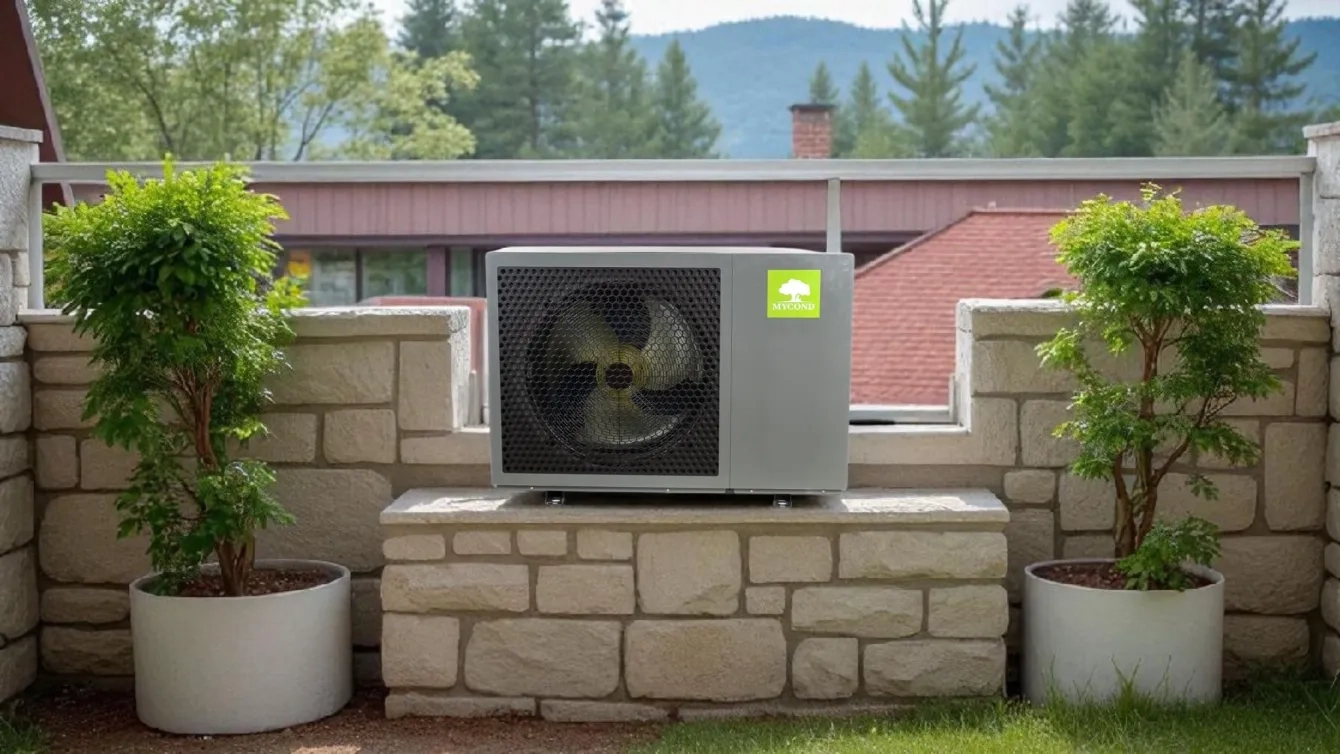
Imagine this: your old gas boiler has reached the end of its life, heating costs are rising every month, and in winter the radiators are barely warm. The house is cold and uncomfortable, and you’re thinking about modernising your heating system. But there’s a dilemma: many modern energy‑efficient solutions require replacing the entire system, including radiators and pipework. That means major building works, significant expense, and weeks without heating.
Most owners of older homes in the UK face this problem. Cast-iron and steel radiators installed decades ago were designed for high heating water temperatures — 65–75°C. Single-pipe systems with radiators connected in series require high-temperature operation to ensure comfort in the last rooms on the circuit.
Standard air-to-water heat pumps flooding the market have a significant limitation — they provide a maximum of 55–60°C. When connected to old radiators this means insufficient heat output, cold rooms, and unhappy homeowners.
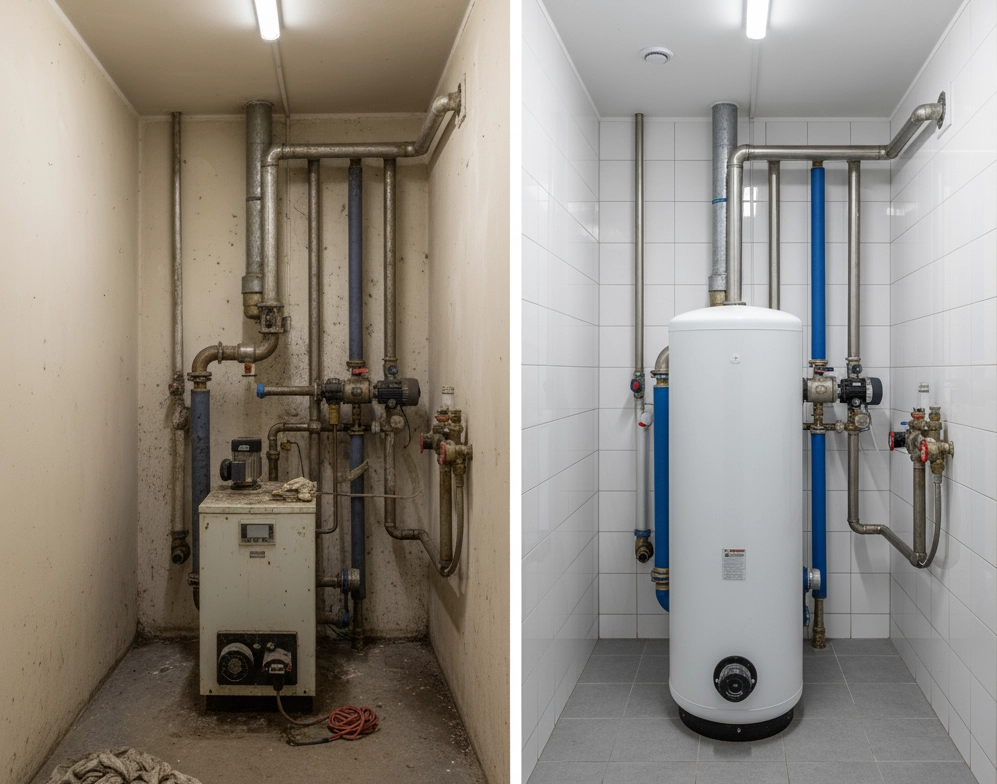
Why do old radiators need high water temperature?
To understand the issue, we need to look at the technical features of older heating systems. Cast-iron and steel radiators of the old type were designed for a 90/70°C flow/return temperature regime, which was standard for gas and solid-fuel boilers.
A radiator’s heat output is directly dependent on the temperature difference between the heating water and the room air. When the heating water temperature is reduced from 75°C to 55°C, the heat output drops by approximately 40–50%. This means that to maintain comfort you need to increase radiator area by 40–50% or add supplementary emitters.
The homeowner has two options:
- Replace all radiators with low-temperature models (for example, convectors or panel radiators) — a costly and labour‑intensive solution.
- Find a heat pump capable of delivering a high flow temperature up to 75°C — a more practical solution for a retrofit without replacing radiators.
High-temperature heat pumps are less efficient than low-temperature ones due to fundamental thermodynamics (the Carnot cycle). Achieving higher temperatures requires more energy. However, even with a lower COP, such heat pumps are still 2–3 times more efficient than gas or electric boilers, making them a cost‑effective choice for retrofits.
Key parameters when choosing a heat pump for retrofitting an old heating system
When modernising the heating of an older home without replacing radiators, it’s important to consider the following parameters:
- Maximum flow temperature: At least 70–75°C for compatibility with old radiators.
- COP at high temperatures: The A7/W55 value (air 7°C, water 55°C) should be at least 3.0 for economic viability.
- Operating ambient temperature range: For the UK climate, stable operation down to −15…−25°C is important.
- Heating capacity: Must match the building’s heat losses, taking the bivalent point into account.
- Construction type: A monobloc simplifies installation and avoids on‑site refrigerant work.
- Refrigerant type: Low‑GWP refrigerants that meet current environmental requirements.
- Integration with the existing system: Ability to connect to existing pipework without a full replacement.
- Control system: Weather‑compensated control and Modbus for smart home integration.
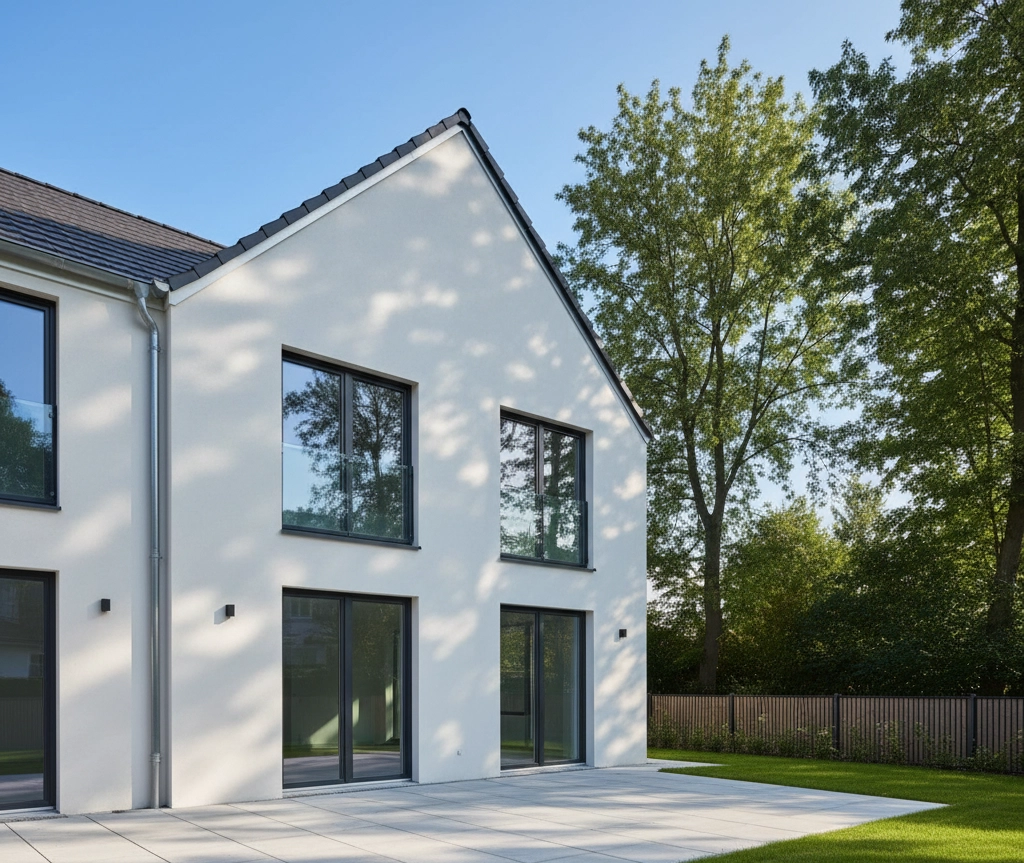
Technical specifications of BeeEco heat pumps for heating retrofits
The Mycond BeeEco series is designed specifically to solve the high-temperature heating challenge when retrofitting older systems. These monobloc heat pumps can deliver a flow temperature of up to +75°C, making them ideal for cast-iron and steel radiators.
| Specifications | MHCM 06 SU1A | MHCM 12 SU3A | MHCM 18 SU3A |
|---|---|---|---|
| Heating capacity A7/W35 | 6.3 kW | 12.2 kW | 18.5 kW |
| Heating capacity A7/W55 | 5.95 kW | 10.5 kW | 16.8 kW |
| COP A7/W35 | up to 4.85 | up to 4.75 | up to 4.78 |
| COP A7/W55 | up to 3.23 | up to 3.15 | up to 3.19 |
| Maximum flow temperature | +75°C | +75°C | +75°C |
| Operating down to | -25°C | -25°C | -25°C |
| Power supply | 230V/50Hz | 400V/50Hz | 400V/50Hz |
| Weight | 110 kg | 123 kg | 184 kg |
| Sound level | 48 dB(A) | 50 dB(A) | 55 dB(A) |
All BeeEco models are equipped with an inverter DC compressor, which allows smooth modulation of output according to the building’s heating demand. This maintains stable indoor temperatures and optimises energy consumption.
When is BeeEco the best solution for your home?
Mycond BeeEco heat pumps are the optimal choice in the following cases:
- Retrofit without replacing radiators: If you have cast-iron or steel radiators requiring 65–75°C heating water, BeeEco can deliver the necessary temperature without changing your emitters.
- Single-pipe heating system: In series-connected systems, high heating water temperature is critical for comfort at the end of the circuit.
- Installation savings: The monobloc design puts all components in a single outdoor unit, minimising indoor works and avoiding special permits for on‑site refrigerant handling.
- Harsh climate: Operation down to −25°C ensures reliable heating even during the coldest UK winters.
- Integration with an existing boiler: Cascade/hybrid connection allows the existing boiler to serve as backup during extreme cold snaps.
- Eco‑friendliness: BeeEco uses R290 (propane) — a natural refrigerant with minimal environmental impact (GWP=3), in line with modern standards.
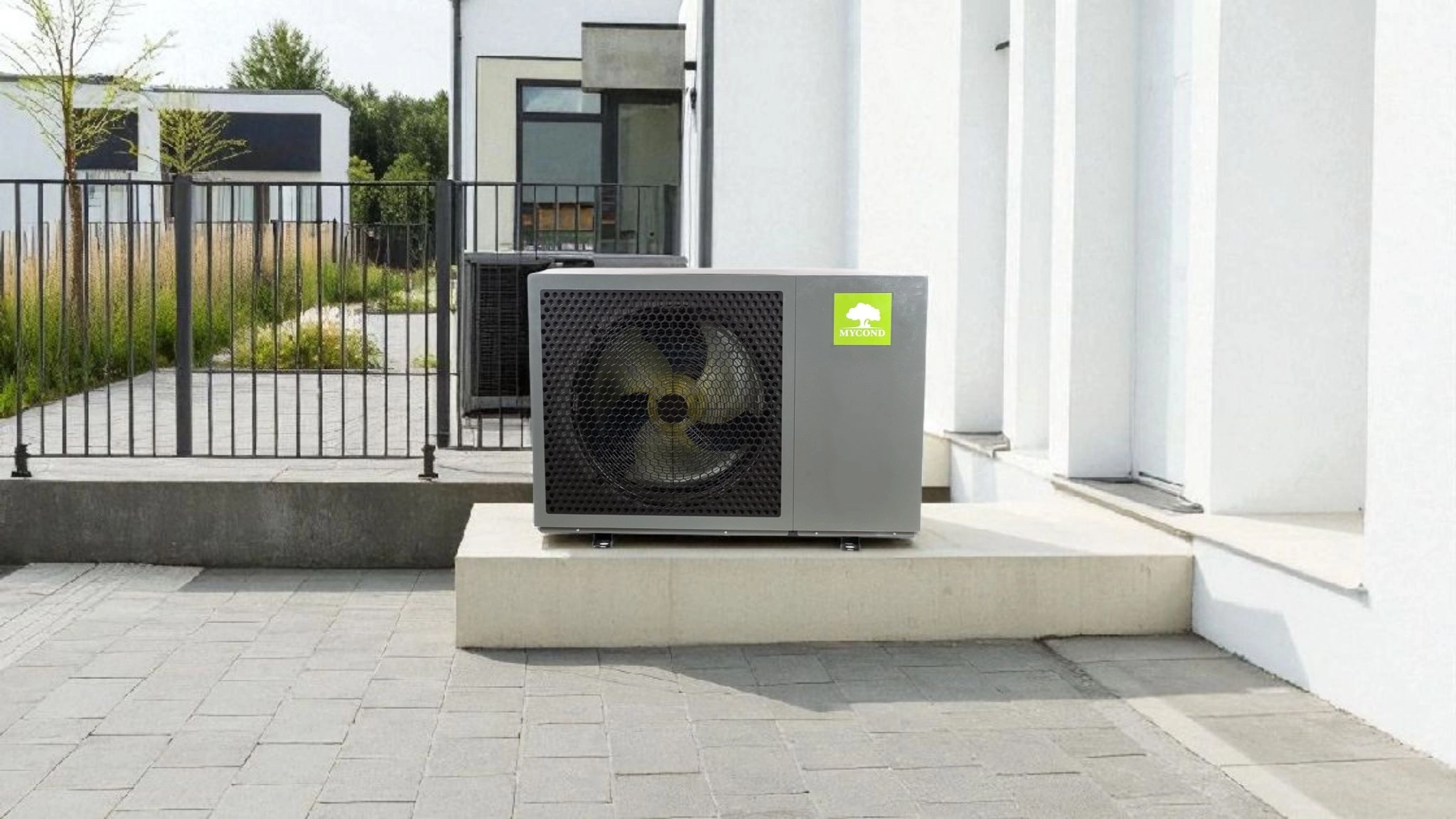
Comparing BeeEco with alternative retrofit solutions
When choosing a solution for heating modernisation, it’s important to consider all available options:
- Standard heat pumps (up to 55°C): Cheaper and with a higher COP, but require full radiator replacement, significantly increasing overall retrofit cost.
- Gas/oil boiler: Provides high flow temperatures but locks you into fuel dependency, has lower efficiency, and produces CO2 emissions.
- Electric boiler: Simple to install but COP=1, making operation 3–4 times more expensive compared with a BeeEco heat pump (COP=3–4.85).
- Ground source heat pump: Higher COP, but needs boreholes or horizontal collectors, greatly increasing upfront costs and complicating installation, especially in urban settings.
BeeEco offers an optimal balance between efficiency, cost, and ease of installation, especially where radiator replacement is undesirable or economically unjustified.
Practical aspects of installing and operating BeeEco in retrofits
Installing a BeeEco heat pump when modernising a heating system has a number of practical advantages:
- Monobloc design: All refrigeration components are housed in one outdoor unit, minimising indoor works.
- Simple connection to the existing system: Connection size G 1" (for MHCM 06 SU1A and MHCM 12 SU3A) and G 1 ¼" (for MHCM 18 SU3A) matches the standard pipe sizes in most older systems.
- Built‑in circulation pump: Ensures optimal flow rate (0.65–1.0 m³/h for MHCM 06 SU1A, 0.9–2.1 m³/h for MHCM 12 SU3A, 1.6–3.0 m³/h for MHCM 18 SU3A).
- Smart control: Weather‑compensated operation automatically adjusts heating water temperature to outdoor conditions, saving energy.
- Remote control: A smartphone app lets you monitor and adjust the heat pump remotely.
- Functionality: Domestic hot water heating via an external 3‑way valve and cascade connection of multiple heat pumps for larger properties.
A practical solution: using the old boiler’s space
When replacing a gas or solid-fuel boiler with a BeeEco heat pump, you can make good use of the freed-up space. In place of the old boiler, it’s sensible to install:
- Buffer tank (thermal store): Helps stabilise the operation of a high‑temperature heat pump, reduces compressor cycling, and improves the system’s overall COP.
- DHW cylinder: BeeEco can heat domestic hot water via a 3‑way valve to 55–60°C with a disinfection function to protect against legionella.
- Hydraulic module: A compact assembly with the required components to simplify connection to the existing heating system.
This approach maximises the use of existing infrastructure, simplifies installation, and increases overall system efficiency.
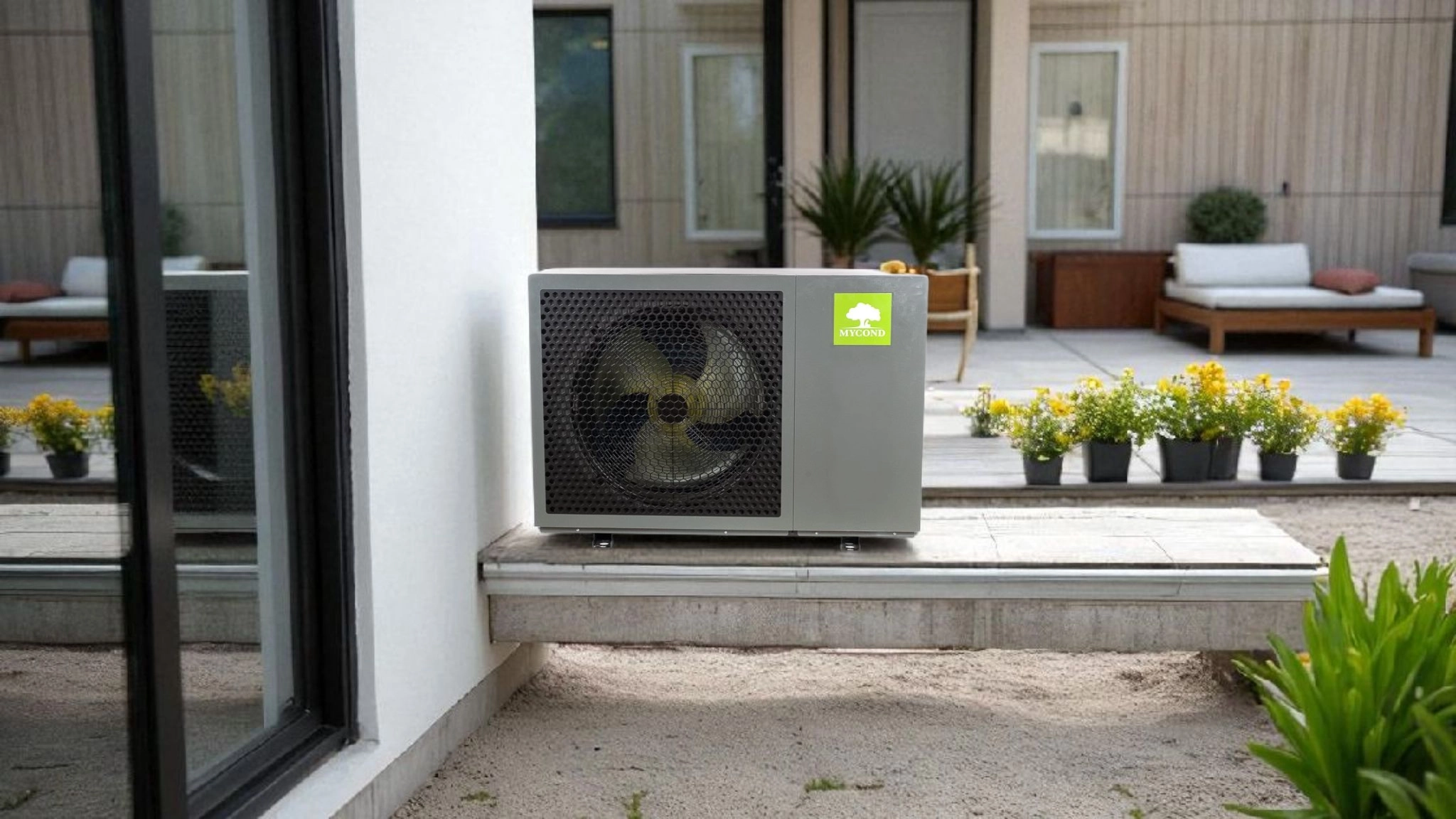
Frequently asked questions about using BeeEco heat pumps for heating system retrofits
Can BeeEco be connected to cast-iron radiators?
Yes, BeeEco is specifically designed to work with cast-iron and steel radiators, because it can provide a flow temperature of up to +75°C, which is sufficient for efficient operation of older radiators.
What is the difference in consumption between A7/W35 and A7/W55 modes?
As the flow temperature rises from 35°C to 55°C, efficiency (COP) decreases by around 30–35%. However, even in A7/W55 mode, BeeEco heat pumps achieve a COP above 3, making them three times more efficient than electric boilers.
Do the pipes need to be replaced when installing a heat pump?
In most cases, existing pipework can be used without replacement. It’s important to check their condition and, if necessary, flush the system to remove accumulated deposits.
Does the heat pump operate below -20°C?
Yes, BeeEco heat pumps can operate down to −25°C, which fully meets UK climatic conditions.
Can BeeEco be used for cooling in summer?
Yes, BeeEco supports active cooling with heating water temperatures from +7°C to +25°C, allowing it to be used for comfort cooling in summer.
What is weather‑compensated control and why is it needed?
Weather‑compensated control automatically changes the heating water temperature depending on the outdoor temperature. In milder weather the system runs at a lower flow temperature to increase COP and reduce energy consumption; in colder weather it raises the temperature to maintain comfort.
Upgrade your heating without replacing radiators with BeeEco
Mycond BeeEco heat pumps offer a unique solution for owners of older houses who want to modernise their heating without major building works and radiator replacement. With a maximum flow temperature of +75°C, high COP, and operation at low outdoor temperatures, BeeEco delivers comfortable and economical heating even in the coldest winters.
For a free consultation on integrating BeeEco into your heating system, fill in the form on our website or contact our specialists. We will calculate the potential savings compared with your current heat source and propose the optimal solution for your home.
Take a look at our successful retrofit projects that retain old radiators to see how effective BeeEco heat pumps are for modernising heating in older buildings.
Sizing formula for a retrofit heat pump
When choosing a BeeEco model for a heating retrofit, we recommend the following formula:
Required heat pump capacity = Building heat load × 0.6–0.7
The 0.6–0.7 factor reflects bivalent operation, where an auxiliary heater is permitted to run on the coldest days. This approach optimises upfront costs and ensures the highest seasonal efficiency throughout the heating period.